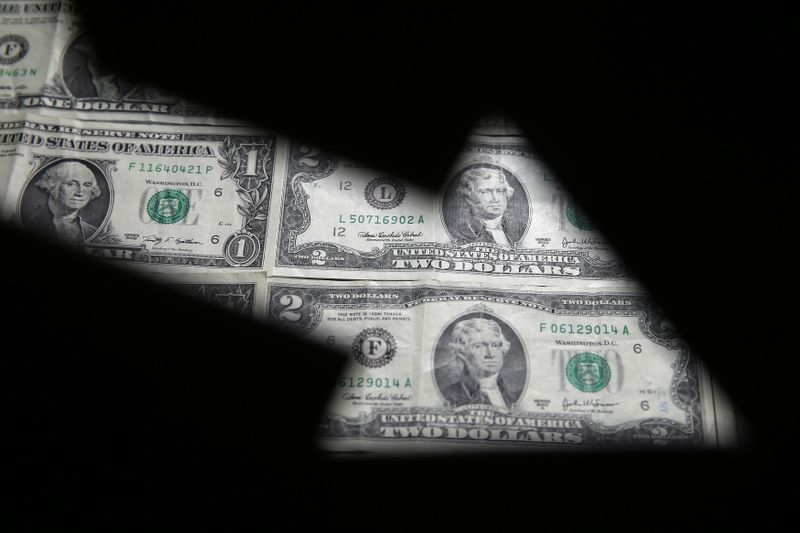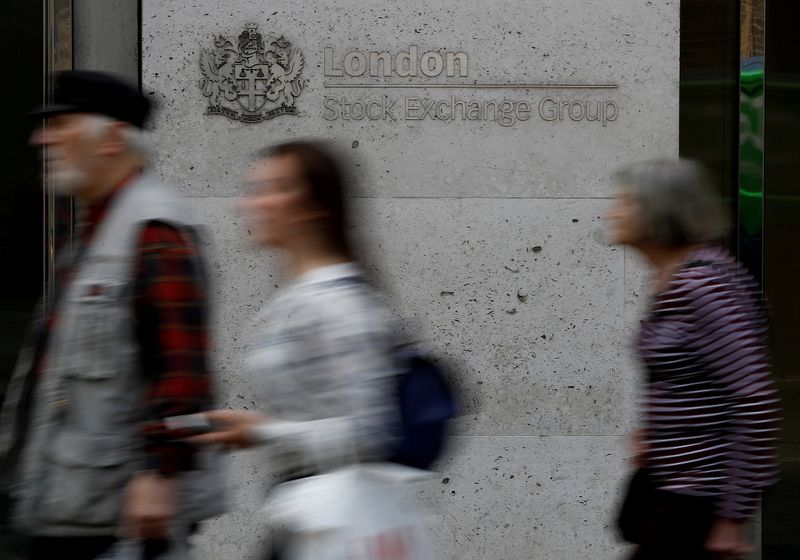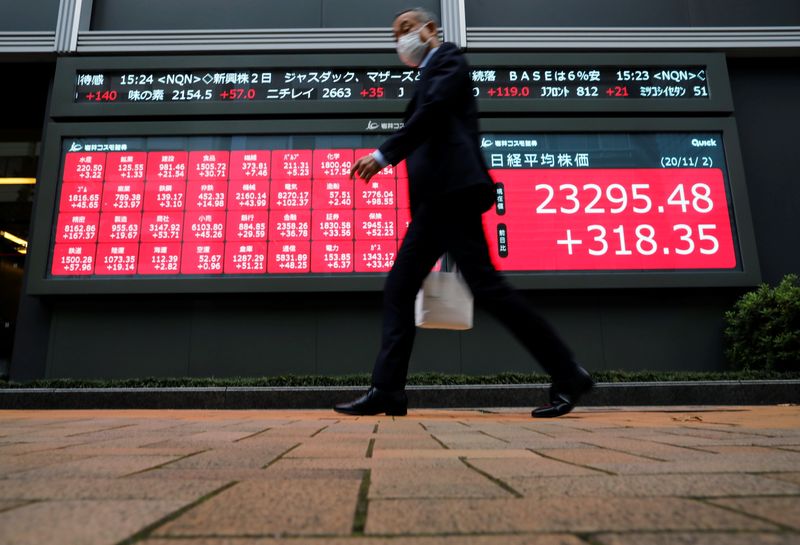NEW YORK (Reuters) – Growing prospects for a U.S. coronavirus relief package after a grim employment report helped boost demand for riskier assets on Friday, sending major stock benchmarks to new records and oil prices to their highest since March when widespread lockdowns aimed at curtailing the pandemic took effect.
U.S. Treasury bonds, meanwhile, dipped in anticipation of increased borrowing to fund economic recovery measures.
The U.S. economy added the fewest workers in six months in November, with nonfarm payrolls increasing by 245,000 jobs last month after rising by 610,000 in October, the Labor Department said on Friday. Economists polled by Reuters had forecast payrolls would increase by 469,000 jobs in November.
“It shows that the economy is still not on firm footing and we need stimulus. The revitalized conversations are important, and this shows that ultimately maybe a bad number will get the politicians to push forward a bit faster,” said Marvin Loh, senior global macro strategist at State Street Global Markets.
A bipartisan $908 billion coronavirus aid plan gained momentum in the U.S. Congress on Thursday as conservative lawmakers expressed their support.
The hopes for a quicker passage of a stimulus bill helped push global stock benchmarks to record highs. MSCI’s gauge of stocks around the globe gained 0.71% following mixed trading in Asia and modest gains in Europe.
On Wall Street, stock indexes reached fresh all-time highs. The Dow Jones Industrial Average rose 248.74 points, or 0.83%, to 30,218.26, the S&P 500 gained 32.4 points, or 0.88%, to 3,699.12 and the Nasdaq Composite added 87.05 points, or 0.7%, to 12,464.23.
The euro touched its highest since April 2018 against the dollar before the greenback slightly rebounded. The dollar index rose 0.153%, inching back from 2-1/2 year lows.
Benchmark U.S. 10-year notes fell 16/32 in price to yield 0.9742%, up from 0.921% late on Thursday.
“November’s report is the weakest monthly jobs number of the pandemic rebound, and markets are clearly betting that today’s result will pull forward stimulus talks, necessitating greater supply,” said Guy LeBas, chief fixed income strategist at Janney Montgomery Scott.
German industrial orders rose more than expected on the month in October, data showed on Friday, raising hopes the manufacturing sector in Europe’s biggest economy started the fourth quarter on a solid footing during a resurgence of the pandemic.
Oil prices got an additional lift after OPEC and Russia agreed to reduce their deep oil output cuts from January by 500,000 barrels per day.
The increase means the Organization of the Petroleum Exporting Countries and Russia, a group known as OPEC+, would move to cut production by 7.2 million barrels per day, or 7% of global demand from January, compared with current cuts of 7.7 million barrels per day.
U.S. crude rose 0.83% to $46.02 per barrel and Brent was at $49.00, up 0.6% on the day.
Spot gold dropped 0.3% to $1,835.46 an ounce. U.S. gold futures fell 0.05% to $1,835.80 an ounce.
(Reporting by David Randall; Additional reporting by Herb Lash and Kate Duguid. Editing by Jonathan Oatis and Will Dunham)

























